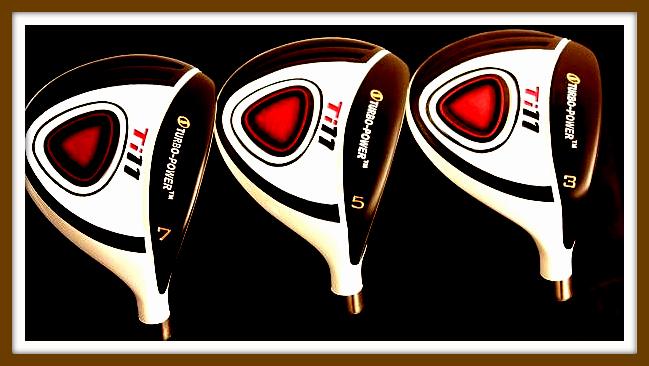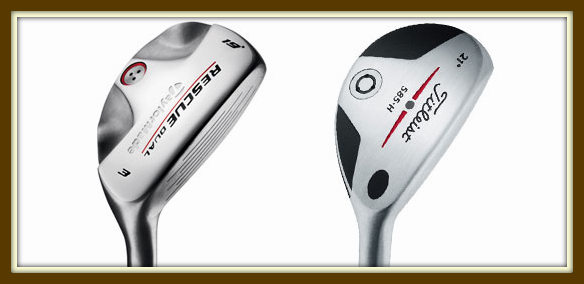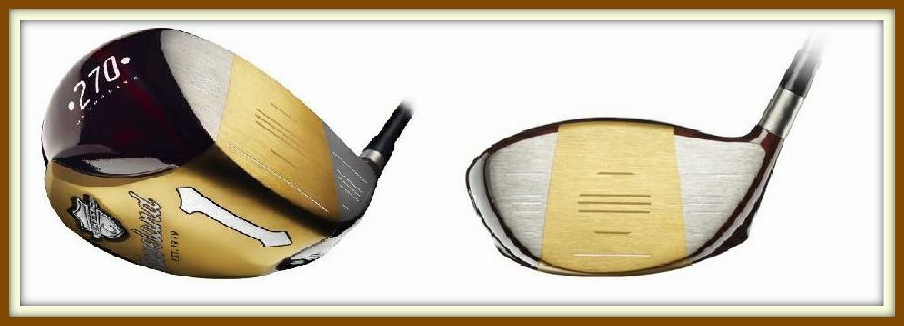

H0me page history
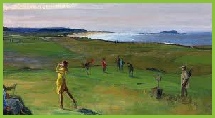
Golf course evolution
Driver customization
With such high emphasis on drive distance and accuracy by players wanting to "play like the pros", a large amount of customization is available in drivers in order to provide the club configuration that best matches the player's specific swing mechanics. Club-makers generally provide for selection and/or customization of five things: the shaft flex, which determines how energy is stored and released during the player's swing; the loft angle, which is a determinant of launch angle and backspin; the offset, which determines the angle the clubface will have to the ball at impact; the club head mass, which can "fine-tune" the club head behavior for a player's swing tempo; and the centre of mass, which is also a factor in launch angle and backspin.
These customizations are typically grouped in certain common configurations. A player with a correct swing of average strength (club head speeds about 85-100 mph at impact) will generally want a driver with a regular-flex shaft, 10.5° loft, a low offset (0-2°) towards a "closed" face (angled toward the player), and a low centre of gravity. This has generally been shown to provide the best overall distance and flight behavior from an average swing, and drivers with this configuration are widely available. Drivers with a low closed offset or no offset are often called "game improvement" drivers or simply "regular" drivers. Ladies and seniors typically have slower swing speeds (60-85 mph), and so to maximize distance it is important to increase "hang time" so that the lower horizontal velocity at launch can carry the ball farther. These players generally benefit from a more flexible shaft and a higher loft angle; this combination "times" the release of stored energy in the shaft to the slower swing, and the increased loft will launch the ball higher and increase backspin to improve flight time. The standard women's driver has a 13° loft and "Lady"-flex shaft, while senior men's drivers average 11° and have an "intermediate"- or "senior"-flex shaft.
Players with problems slicing their drive shots (for a right-hander, a slice starts straight and curves to the right) may benefit from an additional closed offset of 3-4°, which will help square the clubface to the ball during the swing. This is typically referred to as a "max game improvement" driver, sometimes as a "draw driver" because a player with a correct swing using such a driver will draw their shots (for a right-hander, a "draw" starts straight but curves left).
A player with a stronger-than-average swing (>100 mph at impact) will typically want a stiff-flex shaft and a lower loft, around 9.5°, which will respond better to the faster swing tempo and will launch the ball lower so the energy is spent sending the ball outward instead of keeping it in the air. The same player might also benefit from a "Tour driver", which has a 1-2° offset to "open" the clubface (angle it away from the player), and a higher, further-rearward centre of mass. These changes can correct certain problems with a strong swing, such as torquing in the club head "closing" it at impact causing draws, and the normally low and forward centre of gravity causing excessive backspin which can make drives "balloon"; the shot will start low but curve upwards in flight, then "stall" and drop onto the turf, reducing total distance.
Fairway woods
Higher-number woods are generally known as fairway woods and, as their name suggests, are designed for shots from off the turf of the fairway that still require long distance, such as the second shot of a par-5 or a long par-4 hole. They have two important features: a higher loft to lift the ball out of the turf and over low obstacles like hills, and a shallower face height which allows a player to hit a ball from the ground using the exact center of the club, providing greater distance for such shots. These two design features enable players to hit fairway woods off the ground with greater ease than modern deep-faced drivers. Fairway woods are also useful off the tee depending on the hole; players may for instance wish to play their tee shot short (known as "laying up") due to a dogleg or a hazard in range of their driver, and will opt instead for their 3-wood. Fairway woods are typically made with a slightly shorter and stiffer shaft, a smaller club head and more loft than a driver or 2-wood.
While the most common modern club set includes only one fairway wood, the 3-wood, woods are typically available from major brands in lofts up to a 9-wood. A 4-wood is sometimes seen instead of a 3-wood (to fine-tune range differences between a player's driver and fairway wood), while a 5-wood is a common addition to the 3-wood for players who prefer fairway woods to long irons for play through the green. 7-woods are rarer in men's clubs but more common in ladies' and seniors' sets, again as a substitute for lower-lofted irons which are difficult to hit well and whose low launch angle can be risky on a hilly or undulating fairway. Some custom clubmakers offer woods in lofts up to 55° (a "25-wood" equivalent to a sand wedge), these can be used to replace the entire standard set of irons with woods, for players who prefer the swing mechanics and behavior of woods to that of irons and wedges.
Design
The head of a wood is roughly spherical in shape with a slightly bulging clubface and a generally flattened sole that slides over the ground without digging in during the swing. Traditional "wood" clubheads were made of wood, hence the name; beech wood or ash were common prior to the twentieth century, and later persimmon or maple became preferable. Modern club heads are usually hollow steel, titanium or composite materials, and are sometimes called "metalwoods" or more recently "fairway metals". Pinseeker Golf Corp. innovated the first stainless steel metalwood called the Bombshell in 1976. The design was somewhat untraditional and did not have the promotional success needed for profitable long term marketing - it was discontinued 3 years later. In 1979 Taylor Made produced a traditionally shaped stainless steel wood head called "Pittsburgh Persimmon" which achieved market acceptance by the mid-1980s. Oversized heads made from aluminum appeared in the mid 1980s but were slow to catch on since their introduction was via independent component manufacturers and not the larger endorsement based club manufacturers. Very large size drivers (300-500cc) arrived with titanium metallurgy which meant reasonable 'headweights' could be achieved with very large thin shelled but strong structures. By the mid 2000s, titanium heads could be made to 1000 cc (Golfsmith Inc made 1,000 cc (61.0 cu in) in the mid 2000s). Around this time the USGA decided to limit the size of driver heads to 460 cc (28.1 cu in) since the rule requiring heads to be of a traditional shape was being unduly stretched. However, during this period the club-making business needed some financial help, so the USGA relaxed the "traditional shape" rule while enforcing the new 460cc limit, and new head shapes appeared, such as "torpedo" and square/rectangular shapes, to attract the buying public to potentially game improving designs particularly regarding better mishit outcomes.
The typical loft for woods ranges from 7.5 to 31 degrees. Driver lofts generally center around 10.5° but the desired loft is very dependent upon the player's swing speed (low swing speeds need higher lofts); men's lofts vary between 8 and 11 degrees while women's drivers are between 10 and 13 degrees, and seniors' lofts trend toward the upper range by gender. The average 3-wood has a 13-16 degree loft (typically 15°) and the average 5-wood has an 18-21 degree loft. Higher lofts than that overlap with irons in distance, but many players prefer high-number woods to low-number irons wherever they can be used as the wood is easier to hit than a "long iron". The loft of any given club number varies between manufacturers, model lines, and the target player.
The shaft length in woods varies from about 40–48 inches (101.6–121.9 cm), with the current standard length for the driver being 45 in (114.3 cm), formerly 43.5 in (110.5 cm). Graphite shafts are usually preferred for woods due to their light weight, which enables users to generate higher clubhead speeds and thus greater distance. The maximum legal length of a shaft by USGA and R&A rules is 48 in (121.9 cm), though some woods used in long drive contests have been made with shaft lengths up to 50 in (127.0 cm) long.
The face of woods is slightly bulged to counteract the gear effect when the ball hits the face off center. The gear effect causes the ball to spin from hits that are away from the center of the face. The spin contributes a tendency for the ball to have a curved flight path away from the target. The slight bulge of the wood club face tends to counteract the gear effect by slightly changing the direction of the ball to make the flight path of the ball end up closer to the target.
A hybrid is a type of club used in the sport of golf with a design which differs from that of irons and woods. The name "hybrid" comes from genetics to denote a mixture of two different species with desirable characteristics of both, and the term here has been generalized, combining the familiar mechanics of an iron with the more forgiving nature and better distance of a wood.
For many players, long irons (numbers 1-4) are difficult to hit well even with modern clubfaces, due to the low trajectory and very small face of the low-loft club head. Players tend to avoid these clubs in favor of fairway woods which have a larger "sweet spot" to hit with, but such woods, having longer shafts, have a different swing mechanic that is sometimes difficult to master. The long shaft of a fairway wood also requires lots of room to swing, making it unsuitable for tighter lies such as "punching" out from underneath trees. In addition, the fairway wood clubface is designed to skim over instead of cutting into turf, which makes it undesirable for shots from the rough. The answer to this dilemma for many players is to replace the 1-4 irons with hybrids.
Design
A hybrid generally features a head very similar to a fairway wood; hollow steel or titanium with a shallow, slightly convex face. A hybrid head is usually marginally shallower and does not extend backwards from the face as far as a comparable fairway wood; the head must have an iron-like lie angle and therefore has a flatter sole than a fairway wood. The face incorporates the "trampoline" effect common to most modern woods, in which the clubface deforms slightly, then returns to its previous shape, increasing the impulse applied to the ball at launch. The hybrid's lie, length and weight is comparable to an iron.
Being a new class of club, there is no generally-accepted principle governing design. So while a "true" hybrid is as described above, many manufacturers cut production costs by marketing irons as hybrids by adding one or more features to make it look like a hybrid. Some have a club face that looks very similar to an iron, but instead of the cavity-back or muscle-back design these clubs have a slightly bulging back to appear more wood-like in shape. These "iron replacements" swing and perform almost exactly like irons, except the difference in the added weight which slows clubhead speed but increases force applied at a given club speed, allowing a swing to cut through turf or sand with more momentum remaining at contact. These clubs are preferred by players with slower swing speeds. Other club manufacturers produce "true" hybrids with a convex wood-inspired face and hollow body. The first equipment manufacturer to produce a full set of these true hybrids, in both left and right hand, was Thomas Golf. Hybrids are now also available in traditional (teardrop) and square head shapes.
Golf Wood
A wood is a type of club used in the sport of golf. Woods have longer shafts and larger, rounder heads than other club types, and are used to hit the ball longer distances than other types.
Woods are so called because, traditionally, they had a club head that was made from hardwood, generally persimmon, but modern clubs have heads made from metal, for example titanium, or composite materials, such as carbon fiber. Some golf enthusiasts refer to these as "metals" or "metal woods" but this change in terminology is not strictly necessary, because while the material has changed, the style and intended use has not. The change to stronger materials has allowed the design of the modern woods to incorporate significantly larger heads than in the past. Because of the increase in club head size, in 2004 the USGA created a new stipulation for the size of the club head. The legal maximum volume displacement of any clubhead (by the rules of golf) is 460 cc (28.1 cu in)
Woods are numbered in ascending order starting with the driver, or 1-wood, which has the lowest loft (usually between 9 and 13 degrees), and continuing with progressively higher lofts and numbers. Most modern woods are sold as individual clubs allowing the player to customize their club set, but matched sets of woods, especially as part of a complete club set, are readily available. Odd-numbered lofts are most common in players' bags, though 2- and 4-woods are available in many model lines. The number of the club is mainly a reference for the player to easily identify the clubs; the actual loft angle of a particular number varies between manufacturers, and there is often some overlap of lofts (one 3-wood might be higher-lofted than a 4-wood of a different brand or model). Other identifiers have been utilized such as "strong" and "plus" to differentiate various lofts within a line of clubs.
Woods generally fall into two classes, drivers and fairway woods, with a traditional set of clubs including a driver and one or two fairway woods (usually numbered 3 and 5). Many modern sets tend to include hybrid clubs, which combine some of the characteristics of a wood and an iron, to replace the 5 wood and low-lofted irons.
Drivers
The 1-wood, or driver, is the lowest-lofted, longest, and often lightest club in a player's bag, and is meant to launch the ball the longest distance of any club. Originally, the driver was only slightly larger than any other wood and was designed to be used from the tee or the fairway, but with the advent of hollow metal clubhead construction, the driver has become highly specialised for use off the tee by incorporating an oversized head and a deep striking face to maximize the "sweet spot" that gives the best results. It is possible to hit a modern driver off the fairway turf, but it requires a high degree of skill and a certain amount of luck regarding the lie of the ball.
Certain 2-woods are available with a similar deep-faced design but a higher loft, which can be used in situations when a player needs slightly less distance than their average drive, or must make a driver-distance shot from the fairway or rough. However, 2-woods of any kind are uncommon, as a player in these situations will more often opt for the 3-wood, and save the space in the bag for a less specialized club like a wedge or hybrid.The driver has become the most expensive single club of the modern club set, largely due to the high emphasis placed on a player's drive distance; a longer drive gets the ball closer to the green in fewer strokes allowing for better chances of a birdie or eagle.

Golf origins

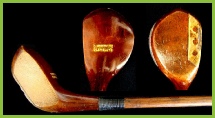
Golf woods

Equipment development

Golf clubs components
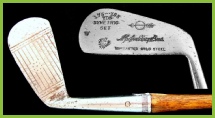
Long and mid irons
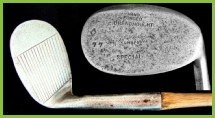

Golf putter
Short irons and wedges
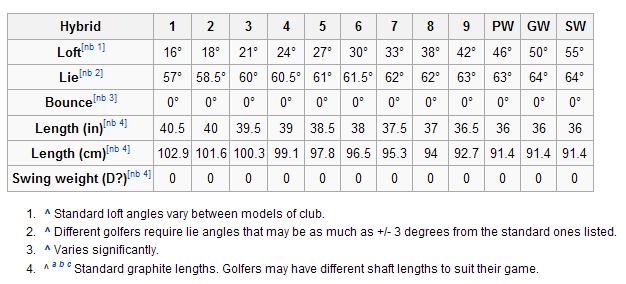
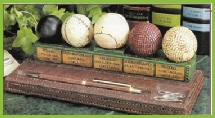
Golf balls
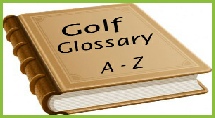
Glossary
